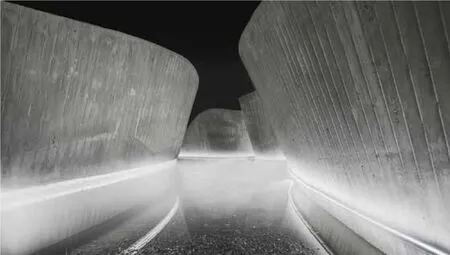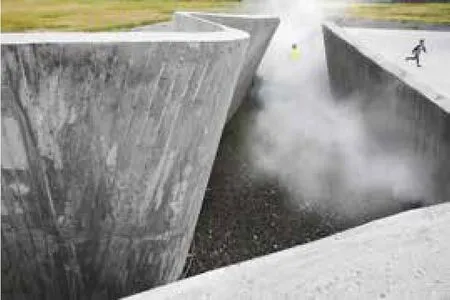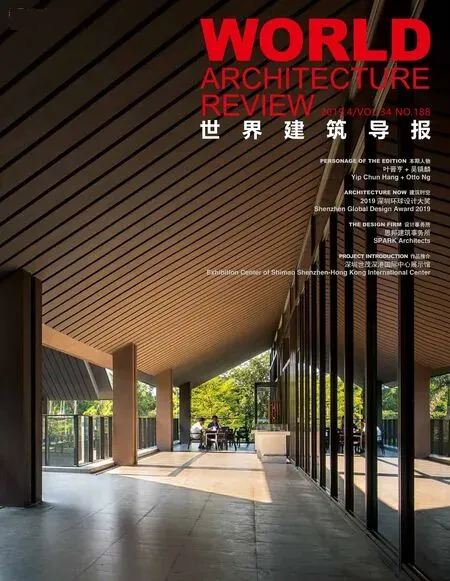高雄水水
类别: 建筑设计 | 城市与环境设计
设计师/ 设计团队:一起设计(辜达齐)+偶然设计 (赵尉翔、曾令理)






“身体能够知晓与记忆。建筑的意义来自身体和感觉记忆中古老的回响和反应。”- 尤哈尼·帕拉斯玛
高雄依山傍海,位处南方。热带气候伴随一百年来的现代化发展,过去数十载,一直是台湾的工业重镇。而高雄人与山海,始终保持著若即若离的距离。我们透过位于高雄市港湾边的地景艺术诉说,关于一个都市人对于自然的想像:我们追求有形的满足以及理智建构的文明社会,我们也渴望心灵与精神的、纯粹感知的身体经验。装置由两道18米及36米长的自由曲面混凝土牆,筑成宽窄不一的峡谷。谷中偶有雾气,水雾自牆面逸散而出,路径曲折蜿蜒,人在其中看不到出口;面对陌生与迷失,五感重新成为沟通的主要语言。峡谷外则覆盖草皮土坡与夜光磨石地面,在夜晚成为都市裡的一盏夜灯。不刻意设定机能,让所有人定义如何自处于这个空间。也许我们对自然的探索,并不一定得仰赖山海土水,而是那很动物性的,几分之几秒的反射动作;或是对能量宣洩的渴望,以及可以任意跨越的自由。人嚮往自然,并非乡愁情怀,而是根植于数百万年的演化习性。转瞬之间,我们围困于自己的巨型产物之中。透过人为创造与科技的介入,在都市中重现感官上的抽象体验,都市/自然,人造/有机,因为人的存在,二者得到和解。
“The body knows and remembers. Architectural meaning derives from archaic responses and reactions remembered by the body and the senses.” - Juhani Pallasmaa
We pursue real satisfaction and a civilized society under rational conducts, We crave for spirituality and the purely conscious physical experiences.The installation alongside the Kaohsiung Harbor area consists of two long free-form concrete walls.Occasional fog emerges out of between the canyon walls, as one walks through this twisted twirled path,the exit remains unfound. Lost in alienness, the boundary of the space expands, and the body senses have once again taken charge as the sole means of communication. Outside the canyon, the walls are covered with meadow slope on one side, and terrazzo ramp with illuminating aggregates on the other. As daylight slowly fades away, the installation reveals glimmering in the city. There is no de fined functionality,just freeing, just imagining. Perhaps our exploration towards naturality does n't rely on the living elements,but the trigger of the embedded animalistic and desire.Through the involvement of arti ficial and technological intervention, The abstract sensuous experience is made possible to reappear in the urban context.Urban/natural, arti ficial/organic, With the existence of humanity, the two get reconciled.

